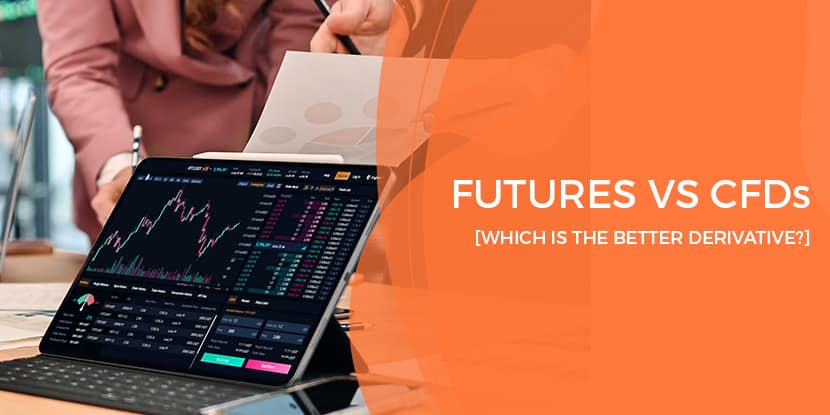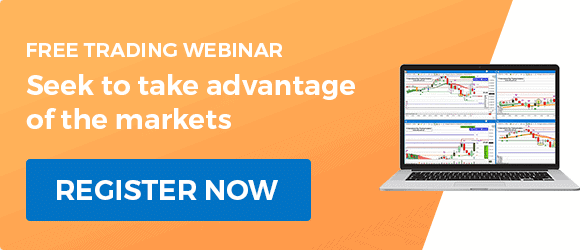
CFD vs Futures: Which is The Better Derivative?
In the world of financial investing, there are various trading instruments available to investors. Two popular types are Contracts for Difference (CFDs) and futures contracts.
While both offer opportunities for traders to speculate on price movements in the financial markets, understanding the key differences between CFDs and futures trading is crucial.
In this article, we will explore these differences, helping you to make an informed decision when choosing between CFD vs Futures.
CFD vs Futures at a Glance
What is CFD Trading?
CFDs are derivative instruments that allow traders to speculate on the price movements of an underlying asset without owning the asset itself.
The trader enters into a contract with a broker, mirroring the price movements of the underlying asset. There is no ownership transfer of the asset in CFD trading.
What is Futures Trading?
Futures contracts are standardized agreements between two parties to buy or sell an asset at a predetermined price and date in the future.
The contracts are traded on regulated exchanges, ensuring their standardized structure and settlement process.
If you’re interested in learning more about Futures, you might want to consider our trading for beginners course.
Leverage / Margin Futures Vs CFDs
Leverage is the ability to control a large amount of assets with a small amount of capital, and it’s typically expressed as a ratio between the initial margin and trade value.
Traders look to take advantage of being able to access wholesale products with a smaller amount of capital available.
Leverage trading increases both the potential for a higher return, and increased losses. It’s important to employ strict risk management when trading leveraged products.
With that in mind, let’s compare CFD and Futures.
CFD Trading
CFDs are known for their leveraged nature, allowing traders to take larger positions in the market with a smaller initial investment.
The leverage ratio varies depending on the asset and the broker, but it can significantly amplify potential profits or losses. Margin requirements are imposed by the broker to cover potential losses and typically range from 1% to 30% of the total position value as regulated by ASIC.
Futures Trading
Futures contracts also offer leverage, although the leverage ratio varies depending on the specific contract and market conditions. Intraday margin requirements for futures trading can be as low as 0.2% of the total contract value.
Overnight margins typically range from 5% to 15% of the total contract value, again subject to variation. These margin requirements in futures trading are designed to manage and mitigate potential risks associated with leverage.
CFD vs Futures Tradable Products
| Asset Class | CFDs | Futures |
|---|---|---|
| Stocks | Yes | No |
| Stock Indices | Yes | Yes |
| Commodities | Yes | Yes |
| Currencies | Yes | Yes |
| Cryptocurrencies | Yes | Yes |
| Agriculture | No | Yes |
| Energy | No | Yes |
| Interest RatesYes | Yes | Yes |
Contract Expiry and Rollover:
While Futures contracts have an expiration month (contract expiry), CFDs do not. With Futures, if a trader wants to keep open a position that he or she opened earlier in the month, then he or she must roll it over by entering into a new contract for the same underlying asset at the prevailing price.
Let’s now look at how expiry (or lack of) works with CFDs and Futures.
CFD Trading
CFDs have no fixed expiry date. Traders can hold their positions as long as they want, closing them at their discretion. However, some brokers may charge overnight financing fees for positions held overnight.
Futures Trading
Futures contracts have fixed expiry dates and need to be settled by the delivery of the underlying asset or cash settlement depending on the contract.
For traders who wish to continue their positions beyond the expiry, they must roll over their contracts to the next available expiry month.
Keep in mind that longer-term trading of Futures carries overnight risk which can include a large margin requirement. This is why we choose to day trade Futures rather than hold positions overnight.
Market Access and Liquidity
CFDs are traded through a broker, rather than directly through an exchange. Because of this the broker plays a role in just how liquid an asset is.
Conversely, Futures are traded directly to an exchange. Because of this the major Futures products are some of the most liquid available.
CFD Trading
CFDs allow traders to access a wide range of markets, including stocks, indices, commodities, and Forex.
The liquidity of CFDs depends on the underlying market and the broker. It is important to choose a reputable broker with strong liquidity and a wide asset offering.
Futures Trading
Futures contracts are primarily traded on regulated exchanges, ensuring high liquidity. They provide access to various asset classes, including commodities, indices, currencies, and interest rates.
The standardized structure of futures contracts promotes liquidity and transparency in the market.
CFD vs Futures Breakdown
| CFDs | Futures | |
|---|---|---|
| Allow Shorting | Yes | Yes |
| Allow Leverage | Yes | Yes |
| Accessible in the U.S. | No | Yes |
| Direct Market Access | No | Yes |
| Free From Broker Pricing | No | Yes |
| Highly Regulated | No | Yes |
| Highly Liquid | Yes | Yes |
| Level Playing Field | No | Yes |
| Leverage Available | Up to 1:30 (in Australia) | Up to 1:15 |
| Consistent cost to trade | No | Yes |
Consistent Cost to Trade
CFDs are priced based on a bid/ask price which is determined by supply and demand. This means that there is no consistency in the cost to trade CFDs.
The bid/ask is also controlled by the broker to help manage risk and drive profitability. Because of this you may not be getting the best price.
CFD brokers have the ability to take the other side of a trade, transition it to a wholesale pool, and earn profits as a spot FX trader. As such, many CFD traders often start with a negative P&L.
Futures contracts have a cost per contract commission which is known up front and generally unchanged. Futures therefore have a simpler and more consistent cost to trade.
Fairness and Regulation
The Futures markets are largely considered to be the most well-regulated markets available to traders.
The Futures markets are accessed directly to a centralised exchange. This means that matching orders is simpler and settlement is guaranteed. In addition, there is full transparency to contract pricing and volume, allowing traders large and small to compete on a level playing field.
There is no one centralised exchange for CFDs. CFDs are divided across various unrelated dealers often with little or no price and volume cross reporting.
CFDs neither offer transparency in pricing, nor a level playing field for traders. All of the data that a trader receives is up to the whim of their broker. Because of this, preferential treatment in order of execution and price are easy to manipulate against you.
CFD vs Futures: Bottom Line
Both CFD and futures trading offer unique advantages and cater to different trading styles and risk appetites.
CFDs provide flexibility, leverage, and a wider range of underlying assets, while futures trading offers transparency, standardized contracts, and regulated market access.
It is important to thoroughly assess your trading goals, risk tolerance, and familiarity with the underlying assets before choosing between CFDs and futures trading.
Remember, proper risk management and understanding the specific characteristics of each instrument are crucial for success in any trading endeavour.
Want to learn more about day trading? Check out our free day trading course
